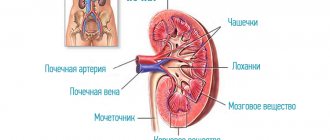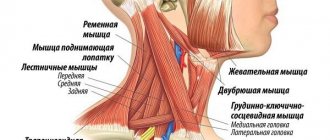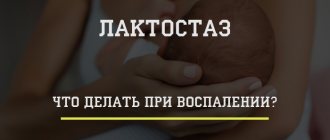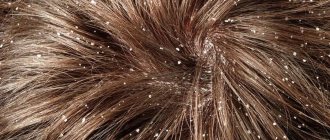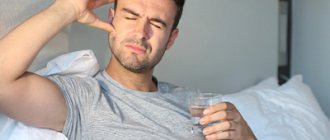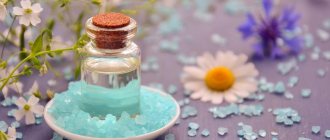September 9, 2016
Heel spur is one of the most common pathologies of the musculoskeletal system. It accounts for about 10% of all orthopedic diseases. Heel spur, or plantar fasciitis, is
inflammatory-dystrophic lesion of the plantar fascia, which occurs against the background of deposition of calcium salts in the area of the heel tubercle.
- Bile
- Dimexide
- Iodine
- Vinegar
- Salt
- Honey
- X-ray therapy
- Blockades
- Injections
- Medicines
Causes of heel spurs
The cause of heel spur formation is inflammation of the plantar fascia due to increased load on it or due to its insufficiency. The development of the inflammatory-degenerative process in the tissues of the aponeurosis is promoted by:
- flat feet with longitudinal deformation of the foot;
- sedentary lifestyle;
- excess body weight;
- long-term static loads on the feet (standing, walking in high heels, using uncomfortable shoes);
- sudden loads on the foot after a long period of rest;
- microtraumas during intense sports training.
What to do if your heel hurts and it’s a spur that has formed on your foot?
- If you are overweight, try to reduce weight to relieve stress on the sole of your foot.
- If you have severe pain when walking, then try to limit yourself to walking.
- Shoes with low soles, below 2-3 centimeters, negatively affect the foot. Replace your shoes with a heel of at least 3 centimeters. Surprisingly, the much-criticized high heels can help improve blood flow in the feet, thereby reducing heel pain.
- Replace regular insoles with orthotics and silicone heel pads to reduce stress on your painful heel bone.
- Follow a dairy and vegetable diet, these nutritional recommendations will ease and reduce heel pain along with other popular tips.
- The presence of a disease such as flat feet accelerates the development of heel spurs and it is necessary to choose the right shoes, loose and not tight.
- It is possible that a former leg injury may cause spurs.
Symptoms of heel spurs
The main manifestation of pathology is pain. In the first stages of the disease, it occurs while walking. As the severity of the pathology develops and worsens, the pain becomes stronger and more acute. Particularly characteristic of plantar fasciitis is the “starting” pain that occurs when movement begins after a long break or sleep.
During examination of the foot, no obvious clinical signs are usually observed; in some cases, slight swelling in the heel area is noted. Palpation reveals pain in the lateral areas of the heel bone and in the middle of the heel from the side of the sole.
The intensity of pain and the severity of symptoms of pathology may vary and do not depend on the size of the bone formation. Thus, even a small growth in the area of the heel tubercle can cause acute burning pain and cause complete disability for the patient, while the formation of a large osteophyte in another patient may manifest only minor discomfort while walking.
Today, there are many known ways to treat heel spurs - both clinical and folk. In this article we will look at both in detail. The first part of the article is devoted to home treatment methods for heel spurs - we will not judge their effectiveness, but will only give a brief overview of the methods of their use.
However, let us remind you that any attempts at self-treatment without consulting a competent doctor are fraught with the development of even more serious complications and can only lead to a deterioration in the patient’s well-being. It is necessary to understand that the use of home treatment methods instead of full-fledged medical therapy will only slow down the patient’s recovery and lead to the progression of the disease.
general information
The spur develops against the background of chronic inflammation of the plantar (plantar) fascia. This is a thin but very strong piece of connective tissue that connects the toes and heel bone. It is responsible for the formation of the arch of the foot and experiences significant stress during walking.
These loads often cause microdamage to the tissue, which heals on its own during the night's rest. If this process does not happen quickly enough, the trauma is repeated in the morning. When a person gets out of bed, he feels pain of varying intensity. Regular damage to the fascia inevitably leads to the development of an inflammatory process, which gradually increases.
Inflammation begins to involve nearby tissues, in particular bone and tendons. On the surface of the bone tissue, the deposition of calcium salts and the growth of a process (osteophyte), which is called a heel spur, begins. It further damages the fascia, and the pathological circle closes. Without the help of a doctor, walking becomes unbearably painful.
A spur can form on only one heel, or it can affect both feet. It all depends on the individual predisposition of the person.
Make an appointment
Orthopedic insoles for heel spurs
One of the most effective means used to treat and prevent the formation of heel spurs are orthopedic insoles. Their use is necessary to unload the foot and improve shock absorption of the musculoskeletal system when walking. Individual orthopedic insoles, made to order by an orthopedic specialist, most effectively eliminate pain and relieve stress on the feet during movement. In this case, the anatomical shape of the patient’s foot is taken into account, which allows you to accurately select and adjust the shape of the insoles. Wearing orthopedic insoles provides maximum comfort for the patient, both while walking and in a static position.
The medical department manufactures and selects individual Formthotics orthopedic insoles. To do this, an orthopedic doctor using a special device - a plantoscope - examines the condition of the tissues of the feet, identifying possible deformations of their longitudinal and transverse arches.
After a thorough plantoscopic diagnosis, the doctor makes individual insoles that most accurately follow the anatomical lines of the patient’s feet and create ideal conditions for the functioning of their musculoskeletal system. The insoles are heated with a hairdryer to make the material plastic, the patient stands on them and the doctor records the exact imprint of the feet in a static position and while walking.
Continuous wearing of Formthotics custom insoles stops the progression of plantar fasciitis, stimulates the restoration of foot tissues and promotes their healing, accelerating the patient's recovery.
Heel pads
One of the types of orthopedic insoles are heel pads. These are orthopedic products, which are shock-absorbing inserts under the heel. They are made from various natural or synthetic materials (leather, balsa, gel, silicone) to reduce the impact load on the foot and reduce pain in the heel during movement.
Size doesn't matter
The thorn can grow up to 1.5 cm in length. It can be easily felt by simply pressing on the heel. But the severity of the pain does not depend on the size of the osteophyte, but on its location. The closer the nerve endings, the more anxiety it causes. And the “length of experience” of the disease is also important. Moreover, if at first the pain, which usually occurs at the beginning of the movement, recedes as soon as the person moves away a little, then subsequently the pain from the load only intensifies. Finally, the heel begins to hurt even at complete rest.
And yet, a bone growth is not the cause of a spur, but rather a consequence. First, the fascia, the connective tissue of the sole, becomes inflamed (which is why the disease is called plantar fasciitis). And only then calcium salts form an osteophyte in the inflamed area of the foot.
Questions and Answers Why is a heel spur dangerous?
Patch for the treatment of heel spurs
Among the home remedies for heel spurs, special pharmaceutical plasters are quite common. In particular, pepper patch is used for severe pain for applications on the heel area for several days.
What effect does the adhesive plaster have in this case?
The active components with which it is impregnated (pepper, belladonna extract) have a local irritating effect, increasing blood circulation and lymph flow in the tissues of the heel area. This reduces local swelling and inflammation, and also reduces the intensity of pain.
No less popular is the Chinese patch for the treatment of heel spurs. Its therapeutic effect is to stimulate the reflexogenic zones of the heel area along with an anti-inflammatory effect on the tissue.
What is a spur on the heel and what symptoms indicate its occurrence on the sole of the foot
A heel spur and what causes it, how to treat it, the question arises before us if suddenly there is pain in the heel when walking and there is a feeling as if you are stepping on a nail.
Again, plantar fasciitis is an inflammation of the connective tissue in the lower part of the foot that causes pain in the leg, makes it impossible to walk and brings suffering to the person. The most important symptom of a heel spur is severe pain in the heel.
Pain that appears in the side of the foot and in the sole during rest and walking, pain in the heel when stepping, these are symptoms of plantar fasciitis.
- In the morning after sleep, getting out of bed you cannot stand on your leg. Overnight, the resulting micro-tears in the heel spur are glued together, and when you get up, the pain reappears when putting pressure on the heel.
- During the day, the heel bone hurts when walking, as the load on the legs again increases.
- The gait of a person who has a spur on his leg changes, and it is visible even to passers-by. He tries to step on his toe more so as not to cause more pain.
Ointment for the treatment of heel spurs
To treat heel spurs at home, various anti-inflammatory ointments and creams are often used. Among them, indomethacin and hydrocortisone ointments are most often used.
When treating the heel area, indomethacin ointment has an analgesic effect on the tissue and eliminates local inflammation. Hydrocortisone ointment, which has a hormonal effect, reduces local swelling and the intensity of the inflammatory process. For home treatment of heel spurs, anti-inflammatory pain-relieving ointments ibuprofen, diclofenac and voltaren are also used.
However, it should be remembered that all of the listed medications do not eliminate the causes of heel spurs, but only smooth out the symptoms of the disease. In addition, their long-term and uncontrolled use in the absence of proper etiotropic treatment can lead to the development of side effects and aggravation of the severity of the disease.
Where can I buy
To obtain a guaranteed result of treatment at home according to traditional recipes, the use of high-quality medicinal raw materials is of no small importance. The online store “Russian Roots” offers a large assortment of ready-made folk remedies for eliminating spurs and individual ingredients for making them yourself at home. Courier delivery is available in Moscow and the Moscow region, and delivery by mail is available in the regions. You can also purchase this product in our network of herbal pharmacies.
Attention! All materials published on our website are protected by copyright. When re-publishing, attribution and a link to the original source are required.
Exercises for heel spurs
One widely used home treatment for heel spurs is foot exercises. The main goal of the exercises is to stretch the plantar fascia and strengthen the muscles of the longitudinal arch of the foot, which helps to increase the elasticity of the tissues and strengthen them.
The most effective exercises are rolling with the foot of a tennis ball, picking up small objects from the floor with the toes, etc. Exercises should be done after mandatory preliminary warm-up and warming up of the muscles.
Rotation of the feet has a beneficial effect on joint mobility, the condition of the muscles and ligaments of the legs. These exercises are performed while sitting on a chair: with your legs stretched forward, you rotate your feet in and out for 15 seconds, making sure that your thumbs are pointing upward.
Thanks to therapeutic exercises, blood supply to the plantar aponeurosis and foot muscles is improved, local metabolic processes are activated, tissue nutrition is improved, which helps accelerate their healing and reduces the risk of microtrauma.
Sports and diet
Since bone growth is formed from uric acid salts, it is important to normalize the acid-base balance in a timely manner. This will help:
- quitting smoking and alcohol (even beer);
- exclusion of fatty and spicy sauces and seasonings;
- limiting fish, meat, flour and sweets, strong tea and coffee;
- increasing the consumption of vegetables, fruits, and fatty rather than low-fat dairy products;
- increased drinking regime. Alkaline mineral waters, decoctions and infusions of rosehip and nettle are especially useful.
Article on the topic
Stop signal. How to care for your feet in old age And of course, physical therapy is necessary.
Here are some exercises.
No. 1. Stand against the wall, put your sore leg behind your healthy one and, resting your hands on the wall, squat until you feel a feeling of tension in your calves. Do not lift your heels off the floor.
No. 2. Place two heavy book volumes on the floor. Stand on books so that your heels hang down. Swing up and down.
No. 3. Collect small objects scattered on the floor with your toes.
No. 4. Roll the bottle with your foot. If you fill a bottle with water from the refrigerator, it will also have an analgesic effect.
Leg fire. Why do feet burn Read more
Massage for heel spurs
Massage is widely used to treat heel spurs at home. The purpose of massage for plantar fasciitis is to relieve muscle spasm, increase microcirculation in the affected area, activate local metabolism, reduce pain and improve tissue trophism. The massage technique combines stroking, rubbing, kneading tissue in the heel area and the entire sole, pinching and pressing.
The therapeutic effect of massage in this case can only be obtained when it is combined with other therapeutic methods (physiotherapy, drug treatment, etc.).
Diagnostics
An orthopedic surgeon diagnoses and treats heel spurs. The main way to identify pathology and assess the degree of its development is radiography. The image clearly shows the bone growth, its shape, location and size.
Additional examination techniques include:
- general and biochemical blood test to identify the inflammatory process, assess the level of uric acid (important for diagnosing gout) and some other indicators;
- Analysis of urine;
- Ultrasound of the foot to assess the condition of soft tissues and identify a possible abscess;
- duplex examination of the vessels of the lower extremities (detects possible circulatory disorders);
- MRI of the foot to determine the condition of all anatomical structures of the foot, including nerve fibers.
If there are concomitant diseases, appropriate laboratory and instrumental studies and consultations with specialists are prescribed.
It is important to remember that heel pain does not necessarily indicate the development of a heel spur. Similar symptoms can be caused by:
- gout;
- rheumatoid arthritis;
- osteomyelitis (inflammation of bone tissue);
- Bekhterev's disease;
- bone tuberculosis;
- injuries, etc.
You should not self-medicate or take painkillers uncontrollably. Only a doctor can choose the appropriate regimen.
Treatment of heel spurs with folk remedies
There are many ways to treat heel spurs using traditional medicine.
Bile
Medical bile, which can be purchased at a pharmacy, has long been used for therapeutic compresses for heel spurs. When applied to tissue in the area of the pathological focus, the drug has a warming, analgesic effect and accelerates the resolution of the inflammatory process.
Dimexide
Dimexide is a fairly popular remedy for home treatment of heel spurs. A bandage is moistened with the drug solution and applied as compresses to the affected area. By acting locally on tissue, dimexide reduces pain and the intensity of inflammation, stimulates tissue metabolism, accelerates the resorption of infiltrates and tissue regeneration.
Iodine
Iodine solution is also used for topical treatment of plantar fasciitis. Applications of iodine solution have a local warming and antiseptic effect on tissue, accelerate local blood flow, improve tissue nutrition, gradually eliminating inflammation.
Vinegar
To get rid of heel spurs in folk medicine, a mixture of vinegar, butter and a chicken egg is used. The thoroughly mixed mixture is applied in the form of compresses to the heel area in order to activate local blood circulation and metabolism, reduce pain and accelerate the resorption of bone growth.
Salt
Salt compresses and baths are also considered one of the most effective home remedies for heel spurs. Salt applications have an analgesic, anti-inflammatory and absorbable effect on tissue.
Honey
Compresses of honey and salt applied at night gradually relieve heel pain, improve metabolism and tissue nutrition, accelerate the resorption of painful infiltrates and relieve acute inflammation.
Traditional methods of treatment.
Sand, salt, lavender oil, anti-inflammatory foods, baking soda
The sand is heated in the oven and the foot is immersed in it until the sand cools down.
You can use half a pack of salt instead of sand. It is better to do these warm-ups before bed. Apply lavender essential oil.
According to a 2015 study, lavender essential oil has anti-inflammatory properties. Try dissolving one or two drops in olive or coconut oil and massage your feet with it. You can also try adding a few drops to a warm foot bath.
Compresses are also made with salt (ten milliliters of iodine tincture and a tablespoon of honey are added to a tablespoon of salt), which are applied at night a couple of times a week (in the morning it is advisable to walk around with the compress for about 15 minutes). Foot baths are also good at soothing pain: boil a salt solution (a kilogram of salt per five liters of water) and, after cooling it down so that the foot can tolerate it, keep it in this solution until it cools down. The procedure is repeated daily for 10 days.
Eat anti-inflammatory foods. The following foods: turmeric, ginger, cayenne pepper and cumin seeds are known for their strong anti-inflammatory properties. These products contain natural antioxidants and polyphenol. And they act as protective compounds and help reduce inflammation. You can prepare a decoction of 1 teaspoon of ginger, turmeric or pepper powder and warm water. Drink this whenever pain occurs. With cumin seeds, you can boil them in water, strain and drink them to relieve pain.
Baking soda. You'll be surprised at the many things this humble kitchen ingredient can be used for. Baking soda has many benefits, from beautiful skin to teeth whitening. It acts directly on the calcium crystals deposited in the heel. Make a paste by mixing half a teaspoon of baking soda with water and apply it to your heel. Baking soda also helps balance pH levels.
Cabbage, vinegar, aloe vera
Cabbage leaf compress. It's no joke - some people recommend using cabbage to relieve heel pain. Soften some cabbage leaves. Secure the leaves with gauze or a bandage and leave overnight. Some people recommend pouring honey over the cabbage leaves before setting them. Cabbage contains a pigment called anthocyanin, which relieves replenishment.
Apple cider vinegar is a common home remedy for a wide variety of ailments. Mix one cup of apple cider vinegar and 6 cups of warm water in a bathtub or container. Soak your sore feet in water for 30 minutes. Apple cider vinegar is rich in nutrients and minerals, including magnesium, which can be absorbed through the skin.
Aloe vera seems to be growing in popularity as a panacea and superfood (or in some cases, superdrink). This plant is rich in antioxidants and antibacterial properties and is also very beneficial for the skin. Aloe vera can be rubbed into the skin topically. Aloe vera contains mucopolysaccharides, which have anti-inflammatory properties.
Massotherapy
Ball massage . This massage is useful for relieving pain. To relieve the pain associated with a heel bone spur, it is necessary to massage the calf muscles. This stimulates blood circulation, which leads to relaxation of the calf muscles, reducing stress on the foot.
For a massage you can do yourself, use a small ball and roll it along the bottom of your foot. You can also use a simple massage roller. This can be done while you are sitting at your desk or on the couch in front of the TV. Many people follow this method to bring immediate and long-lasting relief.
Bottle massage. Sit on a chair with both feet on the floor. Raise one leg and place a water bottle under the middle of your foot. Slowly roll the water bottle from the ball of your foot to your heel, leaning forward to apply more pressure as you massage. Continue rolling the water bottle back and forth from your heel to the ball of your foot about 10 times and repeat with the other leg.
Iodine
You need to crush an analgin tablet, add a little iodine to the powder and mix, apply the resulting mixture to the heel. You can make baths: add a tablespoon of soda and 15 drops of iodine to three liters of water.
Magnesium
Magnesium is an essential mineral for bone formation and calcium utilization. More than half of the magnesium in the human body is stored in the bones, and the body requires it for protein synthesis.
One way to treat heel spur symptoms is to take a warm bath with Epsom salts. Epsom salt is magnesium sulfate. Which has many beneficial properties when it comes to relieving pain and inflammation. Add a cup of Epsom salts and gently massage your heels to relieve pressure.
There are also many great magnesium-rich foods that supply you with magnesium. For example, avocados contain high amounts of magnesium. Pay attention to spinach and bananas, they are also excellent sources of magnesium. Finally, pumpkin seeds, lentils, white beans, brown rice, millet and dried figs also contain magnesium.
Compress made of honey and dough, curd dressings
Heel spurs are treated with folk remedies by smearing the heel with honey, putting some dough on it, putting on a plastic bag and a warm sock.
Three tablespoons of fresh cottage cheese are placed on a bandage folded in several layers and tied to the heel. The procedure is carried out three nights in a row.
Clinical treatments
No matter how effective traditional medicine may seem, limiting yourself to their use is absolutely unreasonable and unacceptable. A full medical examination and the prescription of adequate therapy are absolutely necessary, because plantar fasciitis is a serious disease.
Which doctor should you contact?
If you experience symptoms of a heel spur, you should consult an orthopedic doctor or surgeon. After examination and carrying out the necessary diagnostic tests, the doctor prescribes a treatment regimen, selects suitable orthoses, and, if necessary, gives a referral to see specialists of another profile (physiotherapist, massage therapist, exercise therapy instructor, etc.).
What are the most commonly used clinical treatments for heel spurs?
X-ray therapy
Radiation therapy is used when conservative treatment is ineffective and pain is persistent. Local exposure to x-rays on tissue in the area of bone growth produces a prolonged analgesic effect. Treatment is carried out in several sessions, the duration of one procedure is about 10 minutes. Contraindications to X-ray therapy are pregnancy and breastfeeding.
Blockades
Drug blockades are carried out in cases where conservative therapy for plantar fasciitis does not bring the desired result. Injections of drugs into the area of the pathological focus have an analgesic effect and eliminate inflammation in the tissues.
Injections
For intense pain in the heel area, injections with hormonal drugs of steroid origin (hydrocortisone, diprospan, kenalog) have a good effect. Injections of these drugs into the osteophyte area quickly relieve pain and relieve inflammation.
Medicines
Conservative treatment of heel spurs is carried out in combination with drug therapy. The group of medications used in this case includes:
- analgesic drugs;
- non-steroidal anti-inflammatory drugs (ibuprofen, diclofenac);
- hormonal drugs of steroid origin (hydrocortisone);
- local anti-inflammatory drugs (dimexide, etc.).
Treatment of heel spurs at the ALFA TECHNOLOGIES clinic
Medical treatment of heel spurs is performed using conservative methods, including physiotherapy, pharmacotherapy, massage and drug blockades. The most pronounced therapeutic effect in this disease is provided by shock wave therapy - a unique treatment technique based on the effect of low-frequency acoustic shock waves on tissue.
Penetrating into the affected area to a clearly defined depth, wave vibrations cause a whole range of positive changes in the tissues:
- Blood circulation and lymph circulation improves.
- Local metabolism becomes more intense.
- The structural elements of bone formation become loose and dissolve.
- Spasmed muscles relax.
- The local inflammatory reaction is eliminated.
- The pain gradually decreases, and by the end of the therapeutic course it disappears completely.
- The processes of tissue repair and restoration are activated.
Complete treatment of heel spurs using the shock wave method involves completing a course of 5-8 procedures. The effectiveness of this treatment is very high: at the end of the course, complete disappearance of painful symptoms and recovery occurs in 97% of patients.
Treatment of plantar fasciitis with the shock wave method has a number of advantages over other methods:
- Absolute safety and harmlessness (virtually no contraindications);
- Pain and signs of local inflammation disappear after the first procedure;
- Treatment does not require the use of medications or pain relief;
- Exposure to acoustic waves improves the absorption of drugs into affected tissues and increases the effectiveness of pharmacotherapy.
Shock wave therapy is an advanced technique that guarantees rapid healing for heel spurs. Come to us - we will help you restore the health of your feet. Discover a world of ease of movement - it will take care of you!
